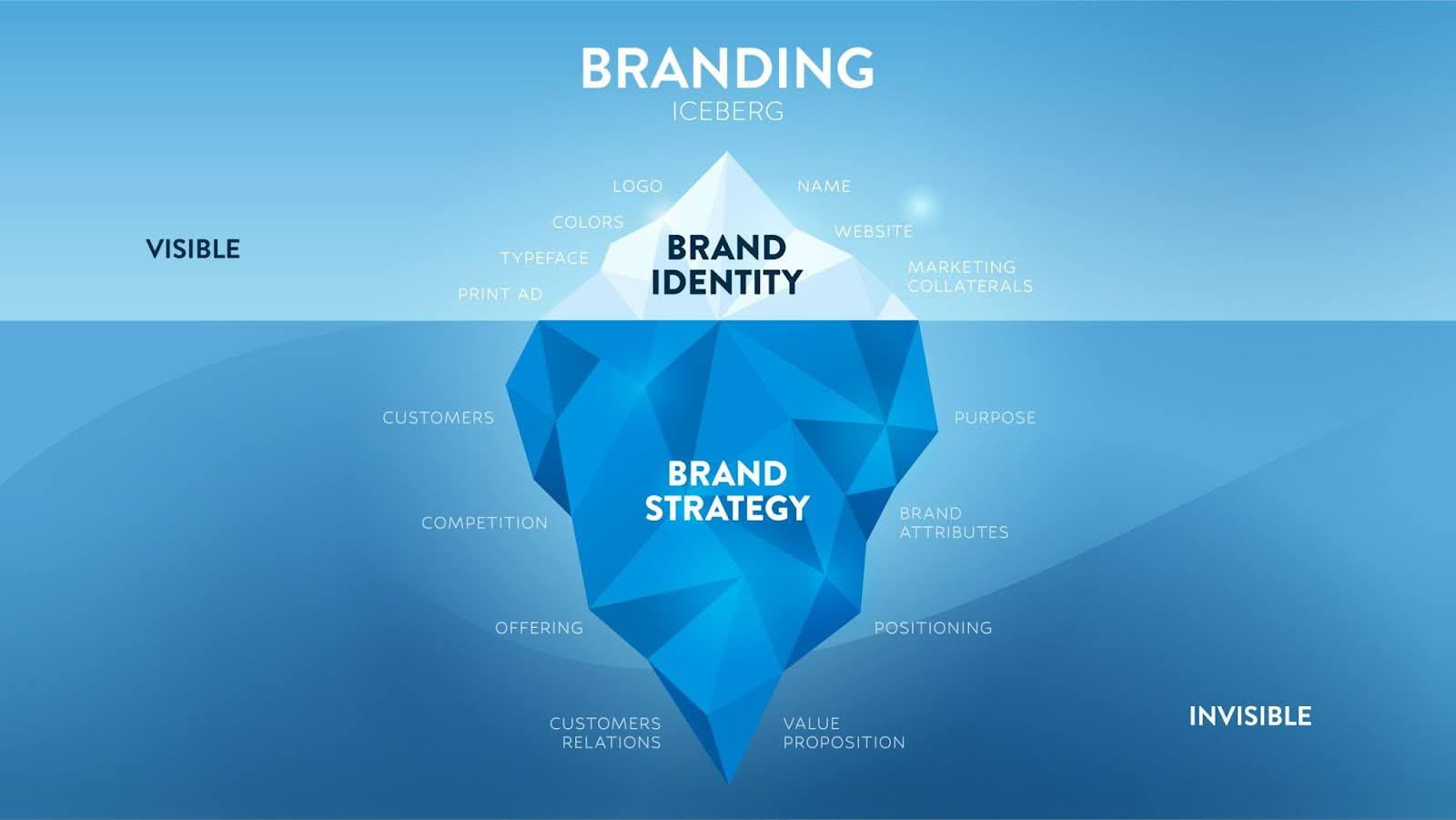Blog
The importance of brand strategy and getting it right

Shaun
Creative Director

The terms ‘brand’ and ‘brand strategy’ are often thrown around interchangeably with limited understanding. Whilst creating strong branding with a visually appealing logo and a distinct tone of voice is certainly an important element of a brand’s success, many business owners struggle with establishing a clear and effective brand strategy.
To stand out amongst the competition, your brand strategy needs to be authentic, reflect your personality and tell a well-structured story. But it’s also crucial that your brand strategy is malleable and can evolve and adapt with the ever-changing demands of your market.
We delve into all things brand strategy, answer why it’s key to business success, and share how a leading branding agency like SOZO can help you get it right.

What is a brand strategy?
A brand strategy is the long-term plan relating to how your business is seen by your audience. From having a strong mission statement to establishing a distinct identity, every element of your brand strategy needs to be appealing and relevant to those you’re looking to target. There’s so much more involved than just visual branding; a successful brand strategy encompasses all the elements that revolve around this to drive awareness and value.
A brand strategy is an integral part of a business’ overall marketing strategy. It helps to define rules, build trust with consumers, command consistency, and position your brand above competitors. SOZO can help you determine your brand’s positioning by examining your vision, mission, communication style, and visual identity across all platforms – more on that below…

Why is a brand strategy important?
A well-rounded brand strategy makes all those other business decisions that little bit easier.
Having a strategic plan in place allows you to stand out in an ever-crowded marketplace, communicate clearly with your target audience, and streamline your marketing into more effective channels. A long-term brand strategy will help your business demonstrate its value, reliability and commitment to customer satisfaction; converting consumers into customers, and then repeat customers.
Take Surreal, for example: a UK-based company who have emerged in the breakfast scene with their ‘high protein, low carb cereal for adults’.

But what’s brilliant is that the brand really does live up to its Surreal name; creating content that is bold, brave, highly entertaining and disruptive. From their comical LinkedIn posts to vibrant OOH (Out of Home) advertising, and even their most recent collaboration with Gymshark, the brand stands out not just for its visual design, but for its playful use of language.
Their brand ethos is to “never stop playing” because a “playful mindset is a healthy mindset”, allowing for fresh creativity not seen before in the adult cereal market.
What’s involved in a brand strategy?
Brand purpose
It all begins with a brand purpose; a clearly defined mission statement that considers your customers’ needs and how to cater to them in the most effective way. Try asking yourself the following questions:
- “Who are we?”
- “What is our purpose?”
- “What problems do we want to solve?”
Your answers to these questions will help shape the reason as to why your brand exists in today’s competitive marketplace, and is a solid starting point for developing your overall strategy.
Brand vision
The next step to consider is your brand vision. Think about the end goal i.e. the problem you’re aiming to solve, and the value you will offer in the process. Essentially, it’s about answering the question of what matters most to your business.
Try shaping your answer into a succinct, two sentence brand vision that is memorable and easy to digest.
We recently helped XCD to solve the common market problem in that HR software often does not live up to expectations. So much of this software is designed by technology companies who do not fully understand HR and the requirements needed to do the job well.
Our solution? “Innovative and intuitive software that is designed by HR people, who know what tools people need to succeed in the workplace.”
Therefore, their new brand vision became:
To create a software platform that HR professionals trust and that allows them to become people focused again.
Putting HR at the heart of XCD’s brand then influenced every other aspect of their brand strategy; from their brand personality, to tone, to language and beyond.

Brand values
Once your vision has been established, it’s time to determine your brand values. These are the guiding standards that help you achieve your mission statement and vision.
Our brand strategists here at SOZO usually pull out six key phrases to paint a picture of your brand and how you speak to your audience. For example, you may opt for brand values such as “being consistently reliable” if you’re a people-centred business, or “staying true to your eco-credentials” if sustainability is highly important to you.
Tone of voice
The final step to creating an effective brand strategy is examining your tone of voice. This will influence your brand personality and style of language for all communications. You could start by asking yourself:
- “Who is our target audience?”
- “How formal/informal do we want to sound?”
- “Who are our competitors?”
- “What relationships do we want to build with our audience?”
The written word is extremely powerful, and here at SOZO, our dedicated copywriters craft your brand story to seamlessly blend with your identity. We work with you to share your unique narrative through a variety of mediums such as social media content, blogs, website copy, digital ads and print communications.

Our top tips for creating a strong brand strategy
1. Consistency is key
Consistency is crucial when creating a striking brand strategy. Every element from your values to your tone of voice helps to establish loyalty and build your customer base, as they buy into your brand and all that it stands for.
Think about the most successful brands; Nike, Amazon and IKEA, to name but a few. They all have valuable mission statements that connect with their target audience:
- The sports brand that “achieves something greater if you just do it”
- The technology giant that prides itself on being “the world’s most customer-centric company”
- The home furnishing company that aims to “create a better everyday life for the many”
Each of these mission statements is reinforced with consistent and engaging designs and messaging. These brands move and adapt with the times, but never stray from their original identities.
2. Research, research and more research
A core factor in establishing the foundation of a successful brand strategy is research. We recommend taking a deep dive into your business, identity, target audience, mission statement and value in the market. Take the time to examine the foundations that you wish to build a brand strategy around, pinpoint any inconsistencies in your brand messaging and study any elements that lack clarity or direction. This research can help you identify not just areas for improvement, but new opportunities, too.
However, the key is not just to look internally, but also cast the net more widely to examine consumer behaviour, market trends and competitors. If you understand who you’re appealing to and how they respond to these factors, your brand strategy will suddenly become much easier to compose.
This research should never stop. Once your brand is strategically positioned in the market, it’s important to regularly assess how you are perceived based on customer experience. That regular market research can lead to continual improvement.
3. Don’t forget your brand positioning
Brand positioning is vital to business success, as it allows you to elevate yourself above the competition. Strong brand positioning brings clarity to your target audience, allowing you to harness your creativity to capture attention and increase engagement.
A brand positioning statement is a great place to start, as it provides a tangible measurement to continuously hold yourself accountable. This brand positioning statement provides an opportunity to explain your unique offering and how it meets the needs of your customers.
Our top tip: always go where your customers go.
The market will always be saturated with choice, which is why it’s so important to position yourself clearly and effectively. Think about your ideal customer: Who are they? What do they do? What problems do they face and how are you going to solve them?
By understanding who your customer is, you can adapt your positioning to reflect this, and target your messaging towards the platforms where they spend the most time. Data and competitor analysis are hugely important tools for tracking your efforts and measuring levels of success.
Create a comprehensive brand strategy that is impossible to ignore
SOZO’s team of brand strategists are highly skilled in defining all the components you could possibly need to develop a clear and coherent brand. Our brand strategy agency can help you determine what you do, who you serve and why it matters, translating this into striking graphics and meaningful messaging.
If your brand strategy could benefit from a refresh, get in touch with shaun@sozodesign.co.uk today.
you might also like… you might also like…
Sign up to our newsletter
Keen to learn more about how to grow online?
Get our latest advice articles, masterclass
videos and webinars.
curious for more?













